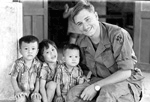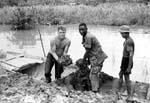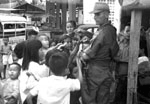In my personal opinion, the CAP program carried out by the 89th MP Group and the 720th MP Battalion was a qualified success. Even though national politics would cause our government to turn their back on and walk away from their promised commitment of assistance to the people of Vietnam, much of our civic action work survived.
Soldiers from the Battalion who have returned to Vietnam after thirty plus years can still attest to the existence of the bridges that were built. We’re not just talking about the bridges that crossed the streams and rivers, we’re talking about the bridges of understanding, caring, joint sacrifices, and friendships.
Even though there has been limited improvements in the economy and infrastructure of the country after all these years under communist rule, the work that was performed by members of the U.S. military did have an everlasting positive effect. The majority of the Vietnamese people still love and trust the Americans who first visited them as young soldiers, and now as aging tourist. And, many of them totally disregard the constant surveillance and overbearing presence of Communist government monitors who accompany or monitor American tourist on the rural excursions.
The Vietnamese people, young and old, freely and openly express their fondness for the former GI’s.This war that was to have ended so long ago is still being fought and won, by the memories of those same young GI's, in the hearts and minds of many of the Vietnamese people that know what it was like to be truly free. Thomas T. Watson, History Project Manager, Corporal, B Company, 720th MP Battalion, 89th MP Group, 18th MP Brigade, March 1968 to March 1969.







 SP/4 Berzino
SP/4 Berzino